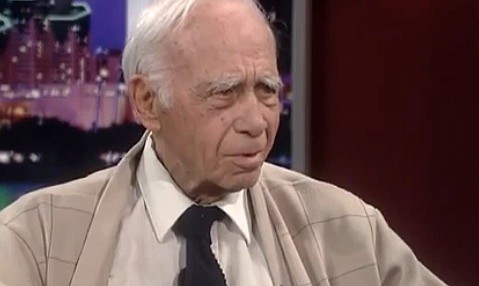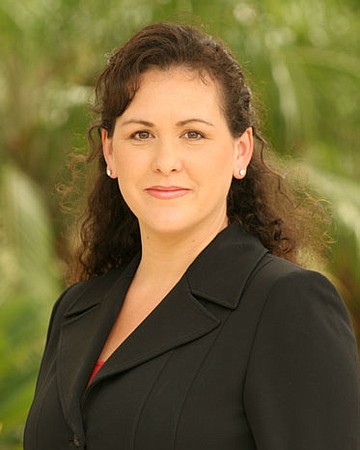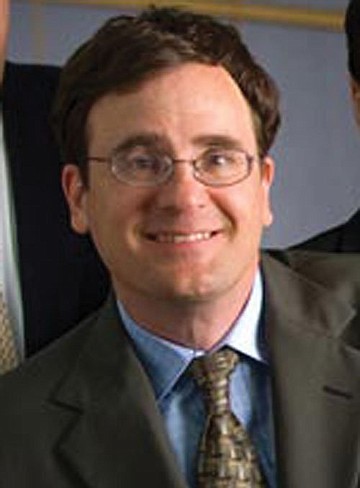 Facebook
Facebook
 X
X
 Instagram
Instagram
 TikTok
TikTok
 Youtube
Youtube

A political alliance is getting almost unstoppable in San Diego: organized labor, led by the construction trades, marching alongside the downtown corporate welfare boosters. They control big chunks of both political parties.
This alliance will almost certainly be responsible for further financial fatuity, similar to the proposed $520 million convention center expansion. The unions and business can frustrate public debate, or even block a vote on a project, such as on convention center expansion. The downtown oligarchs want fat subsidies, and labor wants high-paying jobs. The result is more money going into wholly unneeded downtown structures, while throughout the city, infrastructure rots and maintenance lags.

“The construction industry and labor unions are partners,” says civic activist Mel Shapiro. “They want to build things, whether or not it makes economic sense.” Shapiro and attorney Cory Briggs sued to block the kinky arrangement by which the hotels made the decision on the convention center expansion and the people were denied the right to vote. The two lost at the trial level and are now appealing.
“Big Business and Big Labor go hand in hand to promote [unnecessary] projects,” says Brian Peterson, veterinarian and president of the Grantville Action Group. His organization tried unsuccessfully to block a legal agreement through which tax proceeds from Grantville were used to fund projects in downtown San Diego.
One of the key tools of this alliance is the project labor agreement (sometimes called a community workforce agreement), a prehire pact with labor unions that establishes terms and employment conditions — usually generous — for a specific project. Such agreements deal with wages, hiring of local workers, healthcare, and the like and may prohibit strikes and lockouts.
In June of last year, San Diegans voted for Proposition A, which was supposed to ban the use of project labor agreements in City-funded projects. But then came a Kabuki dance that tiptoed around the will of the people.
First, the San Diego County Building and Construction Trades Council, an umbrella group for the various construction unions, and Unite Here Local 30, representing hotel and restaurant workers, filed a lengthy objection to the convention center expansion. The labor groups gave multiple reasons why the project did violence to the California Environmental Quality Act (CEQA). On the surface, the unions supposedly joined Shapiro and Briggs opposing the project, although savvy San Diegans knew the objections were phony.
“The labor unions were suing to force concessions,” says Richard Rider, chairman of San Diego Tax Fighters. Those supposed environmental objections were “a smoke screen,” he says. “The unions didn’t give a st about CEQA.”
The unions got what they wanted: a project labor agreement with Clark/Hunt, the construction contractor. On cue, the unions dropped their suit opposing the project.
The Coalition for Fair Employment in Construction, representing nonunion construction workers, sued the City, arguing that it was not providing details about the project labor agreement to the public.
The coalition also argued that the deal represented an end run around Proposition A. Labor unions rejoined that the pact was kosher because it was with the construction company, not the City.

The coalition stated that the project labor agreement was worked out with typical San Diego underhandedness between then-Mayor Jerry Sanders’s chief of staff and labor leader Lorena Gonzalez, now in the state legislature. This year, under pressure from the coalition, the City released details of that project labor agreement. It guarantees union-level wages and benefits, although not spelling out hourly rates specifically. Journeyman straight-time hourly wages in the county now are $56.28 for a sheet metal worker, $64.61 for a plumber, and $51.79 for a carpenter doing heavy work, according to the coalition. The agreement bans strikes and lockouts.
The coalition, which says only 11 percent of San Diego construction workers are unionized (others say it is a bit higher), is not satisfied with the agreement. Right now, its suit is ongoing, “but we are currently in settlement agreement discussions,” says Eric Christen, executive director of the coalition.

Erik Bruvold, president of the National University System Institute for Policy Research, says that the political power of construction unions has risen over the past decade and a half, and it’s a statewide phenomenon. He notes that project labor agreements have been used in San Diego for construction of community-college-district buildings and were part of the ballpark politics. “The typical pattern is the unions oppose the project until the agreement is put in place.”
Rider says that the agreements are particularly potent, considering the prevailing wage legislation finalized in San Diego in September. It requires contractors on certain public works and maintenance projects to pay a fair, livable wage. If a subsidized football stadium is ever built, this legislation will raise costs by $100 million, Rider says.

These agreements can wield political wallop. In 2005, during heated discussions on Ballpark Village plans, then–Padres controlling owner John Moores’s construction company faced a session with the city council. So the day before the meeting, Moores’s company made a sudden deal with unions to pay higher wages. The arrangement also dangled goodies in front of environmentalists and affordable housing advocates. The council approved his Ballpark Village plans.
“All the unions want are project labor agreements,” says Steve Erie, professor of political science at the University of California San Diego. “They are in bed with the corporate welfare crowd. The convention center expansion represents insanity. Centers are so overbuilt. These are massive subsidies to hoteliers” — thanks greatly to that coalition of developers and unions.
Heywood Sanders, the nation’s expert on convention centers, says that organized labor does not play as big a role in other cities as it does in San Diego. After he told San Diego leaders about the overbuilding of convention centers, Lorena Gonzalez, then a labor leader, asked him, “Have you ever been inside a convention center?” remembers Sanders, chuckling. He believes the labor/corporate welfare alliance has so much more clout in San Diego because the City is “politically disorganized and weak.”
Says Norma Damashek, former president of the League of Women Voters, “Labor unions have lost their way; they have become overly influenced by construction jobs and project labor agreements. They have sold out their working-class principles.”


A political alliance is getting almost unstoppable in San Diego: organized labor, led by the construction trades, marching alongside the downtown corporate welfare boosters. They control big chunks of both political parties.
This alliance will almost certainly be responsible for further financial fatuity, similar to the proposed $520 million convention center expansion. The unions and business can frustrate public debate, or even block a vote on a project, such as on convention center expansion. The downtown oligarchs want fat subsidies, and labor wants high-paying jobs. The result is more money going into wholly unneeded downtown structures, while throughout the city, infrastructure rots and maintenance lags.

“The construction industry and labor unions are partners,” says civic activist Mel Shapiro. “They want to build things, whether or not it makes economic sense.” Shapiro and attorney Cory Briggs sued to block the kinky arrangement by which the hotels made the decision on the convention center expansion and the people were denied the right to vote. The two lost at the trial level and are now appealing.
“Big Business and Big Labor go hand in hand to promote [unnecessary] projects,” says Brian Peterson, veterinarian and president of the Grantville Action Group. His organization tried unsuccessfully to block a legal agreement through which tax proceeds from Grantville were used to fund projects in downtown San Diego.
One of the key tools of this alliance is the project labor agreement (sometimes called a community workforce agreement), a prehire pact with labor unions that establishes terms and employment conditions — usually generous — for a specific project. Such agreements deal with wages, hiring of local workers, healthcare, and the like and may prohibit strikes and lockouts.
In June of last year, San Diegans voted for Proposition A, which was supposed to ban the use of project labor agreements in City-funded projects. But then came a Kabuki dance that tiptoed around the will of the people.
First, the San Diego County Building and Construction Trades Council, an umbrella group for the various construction unions, and Unite Here Local 30, representing hotel and restaurant workers, filed a lengthy objection to the convention center expansion. The labor groups gave multiple reasons why the project did violence to the California Environmental Quality Act (CEQA). On the surface, the unions supposedly joined Shapiro and Briggs opposing the project, although savvy San Diegans knew the objections were phony.
“The labor unions were suing to force concessions,” says Richard Rider, chairman of San Diego Tax Fighters. Those supposed environmental objections were “a smoke screen,” he says. “The unions didn’t give a st about CEQA.”
The unions got what they wanted: a project labor agreement with Clark/Hunt, the construction contractor. On cue, the unions dropped their suit opposing the project.
The Coalition for Fair Employment in Construction, representing nonunion construction workers, sued the City, arguing that it was not providing details about the project labor agreement to the public.
The coalition also argued that the deal represented an end run around Proposition A. Labor unions rejoined that the pact was kosher because it was with the construction company, not the City.

The coalition stated that the project labor agreement was worked out with typical San Diego underhandedness between then-Mayor Jerry Sanders’s chief of staff and labor leader Lorena Gonzalez, now in the state legislature. This year, under pressure from the coalition, the City released details of that project labor agreement. It guarantees union-level wages and benefits, although not spelling out hourly rates specifically. Journeyman straight-time hourly wages in the county now are $56.28 for a sheet metal worker, $64.61 for a plumber, and $51.79 for a carpenter doing heavy work, according to the coalition. The agreement bans strikes and lockouts.
The coalition, which says only 11 percent of San Diego construction workers are unionized (others say it is a bit higher), is not satisfied with the agreement. Right now, its suit is ongoing, “but we are currently in settlement agreement discussions,” says Eric Christen, executive director of the coalition.

Erik Bruvold, president of the National University System Institute for Policy Research, says that the political power of construction unions has risen over the past decade and a half, and it’s a statewide phenomenon. He notes that project labor agreements have been used in San Diego for construction of community-college-district buildings and were part of the ballpark politics. “The typical pattern is the unions oppose the project until the agreement is put in place.”
Rider says that the agreements are particularly potent, considering the prevailing wage legislation finalized in San Diego in September. It requires contractors on certain public works and maintenance projects to pay a fair, livable wage. If a subsidized football stadium is ever built, this legislation will raise costs by $100 million, Rider says.

These agreements can wield political wallop. In 2005, during heated discussions on Ballpark Village plans, then–Padres controlling owner John Moores’s construction company faced a session with the city council. So the day before the meeting, Moores’s company made a sudden deal with unions to pay higher wages. The arrangement also dangled goodies in front of environmentalists and affordable housing advocates. The council approved his Ballpark Village plans.
“All the unions want are project labor agreements,” says Steve Erie, professor of political science at the University of California San Diego. “They are in bed with the corporate welfare crowd. The convention center expansion represents insanity. Centers are so overbuilt. These are massive subsidies to hoteliers” — thanks greatly to that coalition of developers and unions.
Heywood Sanders, the nation’s expert on convention centers, says that organized labor does not play as big a role in other cities as it does in San Diego. After he told San Diego leaders about the overbuilding of convention centers, Lorena Gonzalez, then a labor leader, asked him, “Have you ever been inside a convention center?” remembers Sanders, chuckling. He believes the labor/corporate welfare alliance has so much more clout in San Diego because the City is “politically disorganized and weak.”
Says Norma Damashek, former president of the League of Women Voters, “Labor unions have lost their way; they have become overly influenced by construction jobs and project labor agreements. They have sold out their working-class principles.”
Comments